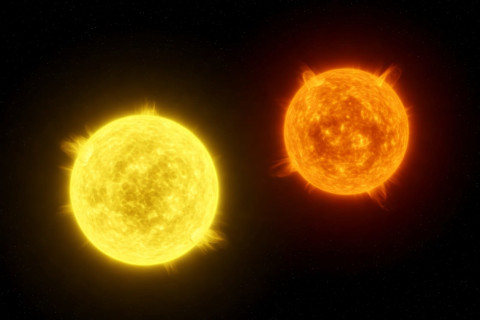 |
Catalogs
Cepheid Phys. Properties
Binary Cepheid Solutions
Projects
SB2 Cepheids
Classical Cepheids
Type II Cepheids
Papers
by category
by first author
by target
Visitors so far: 87651.

Relevant publication:
2025, ApJL, 981, L35 (← click to see the publication at ADS/arXiv)
Recently, a double-lined binary (SB2) classical Cepheid, OGLE-LMC-CEP-1347, was discovered, with the orbital period (Porb = 59 days) five times shorter than of any binary Cepheid known before. The expected mass of the Cepheid was below 3.5 M⊙, which, if confirmed, would also probe the uncharted territory. The system configuration also pointed to the Cepheid as a merger. We present a novel method for determining precise physical parameters of binary Cepheids using both theory and observations. This q-PED method combines the measured mass ratio (q), pulsation (P), and evolutionary (E) models, and the known distance (D) supplemented with multi-band photometry. Applying it, we determined the mass of the Cepheid of 3.41 ± 0.08 M⊙, its radius of 13.65 ± 0.27 R⊙, the companion mass of 1.89 ± 0.04 M⊙ and radius of 12.51 ± 0.62 R⊙. With the current configuration, the apparent evolutionary age difference of almost 1 Gyr between the components strongly favors the Cepheid merger origin scenario. If so, the actual age of the Cepheid would be 1.09 Gyr, on the edge of Population II stars, indicating a significant fraction of Cepheids may be much older than typically assumed. We also applied our method to an eclipsing binary Cepheid OGLE-LMC-CEP-1812 with accurately determined physical parameters, obtaining a close agreement, which confirmed our method’s reliability.
 |
|---|